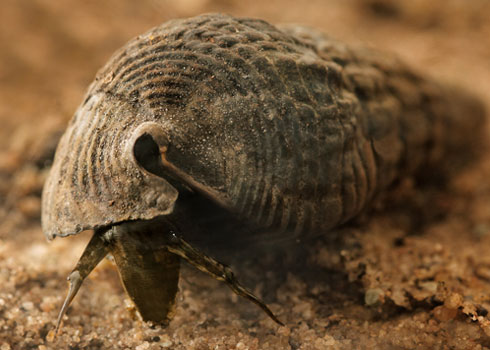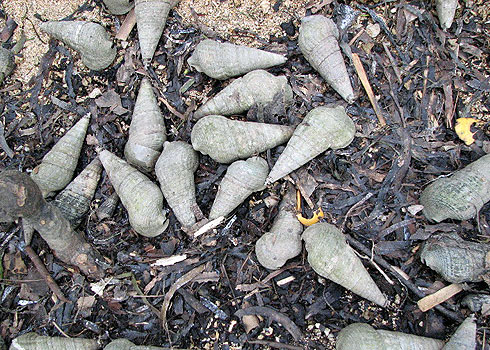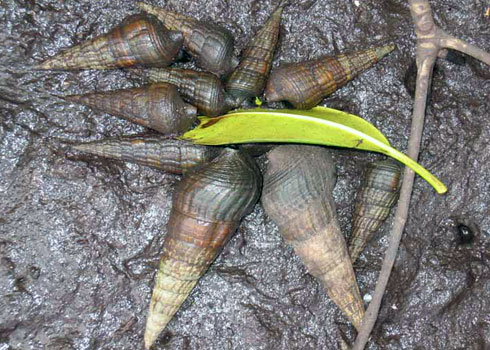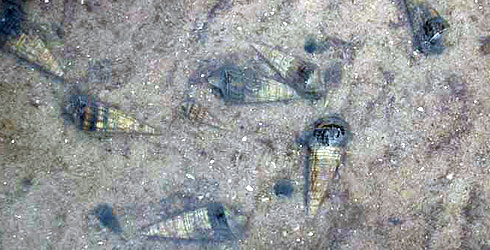Terebralia palustris

Terebralia palustris shell
Terebralia palustris (Linnaeus, 1767) is the largest snail species found in mangrove habitats, commonly reaching 120mm in length - occasional giants reach 190mm.
The mud creepers are amphibious snails that crawl on mud beneath mangrove trees on tropical seashores and in estuaries. As juveniles they feed on detritus, but as adults they consume fallen mangrove leaves.
The snails reproduce by depositing spawn masses - long gelatinous strings containing small eggs - on mangrove roots. Larvae hatch as planktonic veligers (free-living larvae).
The shell is thick and heavy, sculptured by 4 flat, spiral ribs on each whorl, and by longitudinal ribs that become indistinct on the final whorl.
This species is common and widespread, from east Africa to Arabia, India, southern Japan, Indonesia and northern Australia.
Species detail
-

Taxonomy
Terebralia palustris is a large snail species with a characteristic shell. Read on to discover what the shell tells us about the snail’s age.
-

Distribution
This species can be found wherever mangroves grow, and often it occurs in large numbers. Find out where.
-

Biology
Explore the reproductive cycle of this snail and discover what happens when it is attacked by crabs.
-

Behaviour
Juvenile Terebralia palustris feed on detritus whereas adults eat whole mangrove leaves. Discover how the snails adapt to the change in diet, and how they seek out their food.
-

Conservation
This species is probably not endangered at present, but is threatened by the widespread destruction of the mangrove forests upon which it is dependent.
-
References
Get reference material for Terebralia palustris.
Images

Terebralia palustris.
© Christoph Kühne, Creative Commons Attribution 2.0 Generic
Terebralia palustris.
© Creative Commons Attribution-Share Alike 3.0 Unported
Large juveniles and adults of Terebralia palustris feeding on a fallen mangrove leaf, near Pemba, Mozambique.
© David Reid, Natural History Museum, London
Juveniles of Terebralia palustris feeding on detritus, near Pemba, Mozambique.
© David Reid, Natural History Museum, London
Terebralia palustris shell.
© Christoph Kühne, Creative Commons Attribution 2.0 GenericAuthor

Dr David Reid
Merit Researcher and Leader of the Marine Mollusc Research Group. His research focuses on the systematics and evolution of shallow-water gastropods.
A word from the author
"This slow-moving species is extraordinarily resilient and is one of the few animals that can eat tough mangrove leaves, so it is beautifully adapted to life in mangrove forests. By breaking down leaf litter it fulfils an important role in this productive tropical ecosystem."
